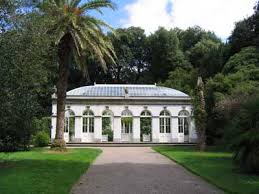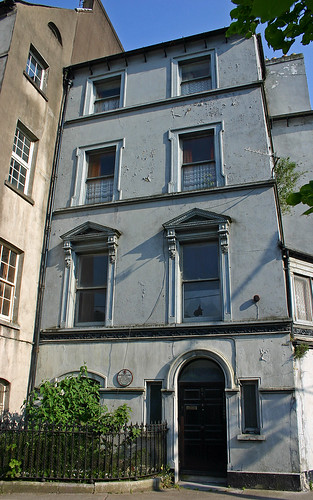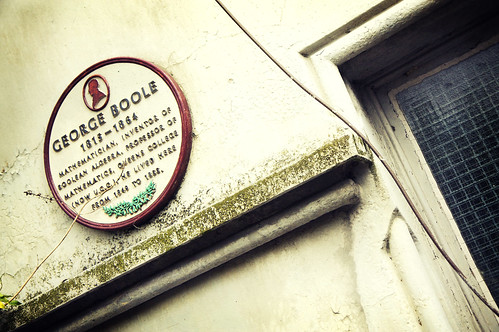I was delighted to browse through a copy of the first two volumes of the Irish Naturalist recently in UCC's Boole Library. In particular, I was drawn to the regular notices submitted by the Cork Naturalist's Field Club, which had been founded around the same time as the journal. In the first edition, an important message was given pride of place in the introduction:
"
As we go to press, we recieve promise of support from the new Naturalist's Field Club at Cork, a notice of the establishment of which will be found on page 24. We heartily wish the Cork society a prosperous and useful career, and hope that other centres in the south and west of Ireland may soon follow the example of that city."
The
Irish Naturalist was established in April 1892 by several Dublin-based naturalists as a medium through which those interested and studying nature in Ireland could publish notes and longer articles about Irish natural history.
'the fact that no journal of the kind exists in the country, is sufficient reason for our undertaking'In the first edition, the publishers noted that "
the fact that no journal of the kind exists in the country, is sufficient reason for our undertaking". The journal was established upon a wave of both scientific and amateur interest in botany, zoology and geology around the end of the 19th century and the launch happened as a number of Field Clubs were being established around the country: Belfast (1863), Dublin (1886), Cork (1892) and Limerick (1892).
The
Irish Naturalist was published for 33 years and is now an important resource for 'naturalists' who wish to study the history of particular species in Ireland and study the development of science in Ireland.
During the period 1900-1922, interest in natural history began to decline, not least because of prevailing political uncertainties and the journal ceased publication in December 1924 (Wyse Jackson and Wyse Jackson, 1992). Almost immediately afterward, the
Irish Naturalists' Journal was launched in Belfast in 1925. This journal continues to publish to this day.
The submitted notice in that first edition informs us that the Cork Field Club was formed on March 18th of that year (1892) and that the President, Vice President and other officers were elected. The President was Prof. Marcus Hartog of Queen's College (now
UCC) and one of the Vice Presidents was
Mr. Denny Lane.
Marcus Hartog had become Professor of Natural History at Queen's College in 1882 (when he was 31 years old) and he held the post for 39 years. Born in London in 1851, he graduated from Cambridge with a first-class degree in Natural Science. He worked on fungi with the famous botanist Anton de Bary, the "Father of Plant Pathology" and inspired
Sir Edwin Butler, who studied under him, to pursue a career in mycology rather than medicine (Cullinane, 1995).
Throughout the editions of the
Irish Naturalist for the first year, we read a number of 'proceedings' from the Cork Naturalist's Field Club:
 |
| Crawford Municipal Buildings, Cork. Now Crawford Gallery |
At a meeting of the club on the 22nd of April 1892, the secretary announced "
Mr. J O'Sullivan's munificent gift of his herbarium of the Co. Cork flora, containing 7,000 specimens of plants, to the museum of the society". Such was the number of specimens collected by the club that, later the same year, the proceedings note that "
The secretary gave account of negotiations carried out.... with the object of obtaining for the club, space in the Crawford Municipal Building in which to form a museum".
At the same meeting (November 2nd), Prof. Hartog "
gave his Inaugural Address, entitled the "Life of a Cell", dealing with the formation and gradual development of the cell in vegetable and animal tissues, illustrating by numerous diagrams, and by the manipulation of pieces of dough, the various shapes assumed, the manner of absorbing food, and the curious process of cell-division".
By the following meeting (Nov 16th) the secretary was pleased to announce that a "
large corridor" was now available in the Crawford for museum purposes.
'the following rambles have been taken by members'An important part of all Field Clubs established around this time were the organisation of regular "rambles" whereby the members would depart for some scenic, part of the city or county and observe and collect specimens for further examination. The Cork field club was no different and many of the locales visited in the first year of the club's activity are still visited by scientists and amateur naturalists to this day.
At their meeting on the 6th of May 1892, the members recorded that, "
the following rambles have been taken by members of the club: - April 18th to Blarney, conducted by Mr. J O'Sullivan. April 23rd to Goulding's Glen, conducted by Mr. WJ Knight".
However, as with all field work, things didn't always go to plan, as the proceedings of the Summer meetings record:
"
The uncertain weather of the past weeks, combined with the fact of many members being on holidays, has had the effect of making the excursions very small, but several have been taken:
June 29th- the club visited Killeagh, for Glenbower Woods...[which] deserves to be better known.
July 9th- a wet morning deferred many, but a party of twelve visited the beautiful grounds of Fota (A.H. Smith-Barry, Esq.), where there is a splendid collection of pines and firs from all parts of the world, the characteristics of which were pointed out by Mr. Osborne, the Steward.
 |
| The Orangery at Fota Arboretum, Cork. |
July 13th - to Kinsale and the Old Head, including the unrehearsed item of the wreck of the 'City of Chicago'.
July 23rd- to Mourne Abbey, where a small party, conducted by Mr. Sullivan, of Queens's College, had a most instructive botanical ramble.
August 1st- Bantry Bay was visited by some, and botanical and entomological specimens taken.
August 10th- A very pleasant afternoon was spent by some members at Currabinny Woods, Queenstown [now Cobh] harbour, the 'take' being principally entomological".
As these records show, the history of studying the Natural Sciences in Cork and Ireland generally is rich and varied. The
Irish Naturalist allows us to get some idea of what Cork naturalists (both academic and amateur) were up to during this time, when interest in the natural world had reached a peak.
Many of the locations visited by the club in their first year are still accessible for "rambles" and they are still areas where the natural world can be enjoyed and studied at leisure.
In the second edition of the
Irish Naturalist, an author notes, while discussing a newly found plant species, that he was "
botanizing along the banks of the river Main, Co. Antrim" when he made the discovery. I don't believe I've ever seen the word botany used as a verb before but it conveys the enthusiasm and joy which the writer clearly derived from the study of plants. I shall be using that word more often as I revive the lost art of the "ramble".
* The title of this piece "A Gossip..." comes from the proceedings outlined above, where it was common to see this phrase used as the title for lectures, e.g. A Gossip on the Ornithology of Co. Cork.
Sources:
Cullinane, J.P., (1995) 150 years. A history of the Chair of Botany and Zoology (Queen's College Cork - University College Cork). Unpublished report as typed manuscript.
Wyse Jackson, P., Wyse Jackson, P. (1992). The Irish Naturalist: 33 years of natural history in Ireland 1892-1924. Irish Naturalists' Journal 24(3): 95-101
















